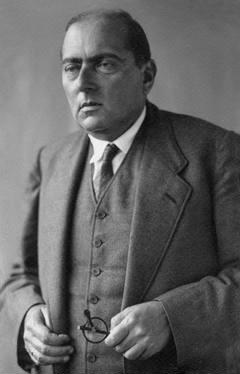The Toeplitz Project#
Facilitating the genetic method in the study of mathematics#

I would call this the genetic method. I…said to myself: all these components of the infinitesimal calculus…are taught today as part of a canonical syllabus, and nowhere is the question asked: Why so? How did one arrive at just these results? Each of these developments must have arisen from some exciting investigation, some impassioned search, at the time it was first invented. If we would only return to these roots of the concepts we teach, then would the dust of time and the wear of long use fall away, and they would be reborn to us as creatures full of life.
Digitizing historical steps#
While any academic subject can benefit from digitization of the early documents in which the subject was formed, mathematics is special in that its core artifact – the mathematical proof – is a form of logical argumentation that can be broken down further, into steps.
The purpose of the Toeplitz Project is to facilitate historically based teaching and learning in mathematics, by providing a specialized digital resource, in which the proof steps from the subject’s historical documents are individually represented.
Method#
Proofs from historical mathematical books and papers are translated by expert, human translators into a system called Proofscape. This is a simple argument mapping system, tailored to the needs of mathematics.
In this translation, proofs are broken down into steps, while the form of the argument, and the locations of cited sources, lemmas, and theorems, are preserved.
Each step is represented by a node, and its contents may be encoded in multiple ways, such as:
In the original, natural language of publication (often French, German, Russian, or Latin).
As an English translation, with use of modern notation.
As objects and relations in the syntax of a computer algebra system.
With links to source PDF documents.
Since Proofscape nodes are open-ended, more encodings than these may be added.
Benefits#
Representing proofs from the existing literature in the form described above opens up myriad, powerful ways of using computers to enrich the study of mathematics. For example:
Browsable archives: Students can have the history of mathematics right at their fingertips, with the ability to call up any proof from any paper, and to read it in a language they understand.
A history of proof ideas: By drawing connections between different papers in which proof ideas were introduced and replicated, students and scholars can begin to piece together a detailed history of the origin and evolution of such ideas.
Example generation: A computer algebra system like SymPy can be used to generate numerical examples of the types of mathematical objects in play at any given step of a proof, thereby helping to illustrate the ideas.
Verification and interpolation: A theorem prover like Lean can be used to check that the steps from the historical literature are valid – and find those that were not – and even to provide missing steps, omitted in original texts.
Annotations: Teachers can use the PISE software to author annotations. These are discussions of proofs that are displayed side by side with a graphical display representing the steps of the proof. Clicking links in the discussion causes the proof graphics to navigate, advance, and light up, showing the part that’s being discussed.
Expansions: The PISE software can be used to display and hide expansions, which are collections of additional steps that can be spliced into proofs to fill in difficult inferential leaps.
Visualization: The steps of each proof can be diagrammed in a way that reflects the deductive structure of the argument. This can yield immediate insight into the way the parts of the proof fit together, where the premises are used, and what are the key constructions. It can also aid in remembering proofs, by associating each step with a place in a visual, mental model.
What it’s not#
A few remarks are in order, to head off possible misconceptions.
Not scanning documents: Electronically scanning old documents to make PDFs is one very important step in preserving our mathematical heritage, but that is not a part of this project.
No emphasis on particular applications: The purpose is to provide a library, which is a raw material that can be used in many ways, such as those discussed in the Benefits section above.
In particular, while the Proofscape language was originally designed for visualizing proofs in diagrammatic form, and that is one capability the library will support, this is not central. In fact PISE, the Proofscape browsing software, can also show the steps of proofs in simple linear order, and it is up to individual users to decide how they want to browse proofs.
Challenge goal: 100 year anniversary#
Toeplitz published his paper on the genetic method in 1927. It seems a worthwhile and attainable goal, to try to build this library into a valuable resource for math students by 2027.